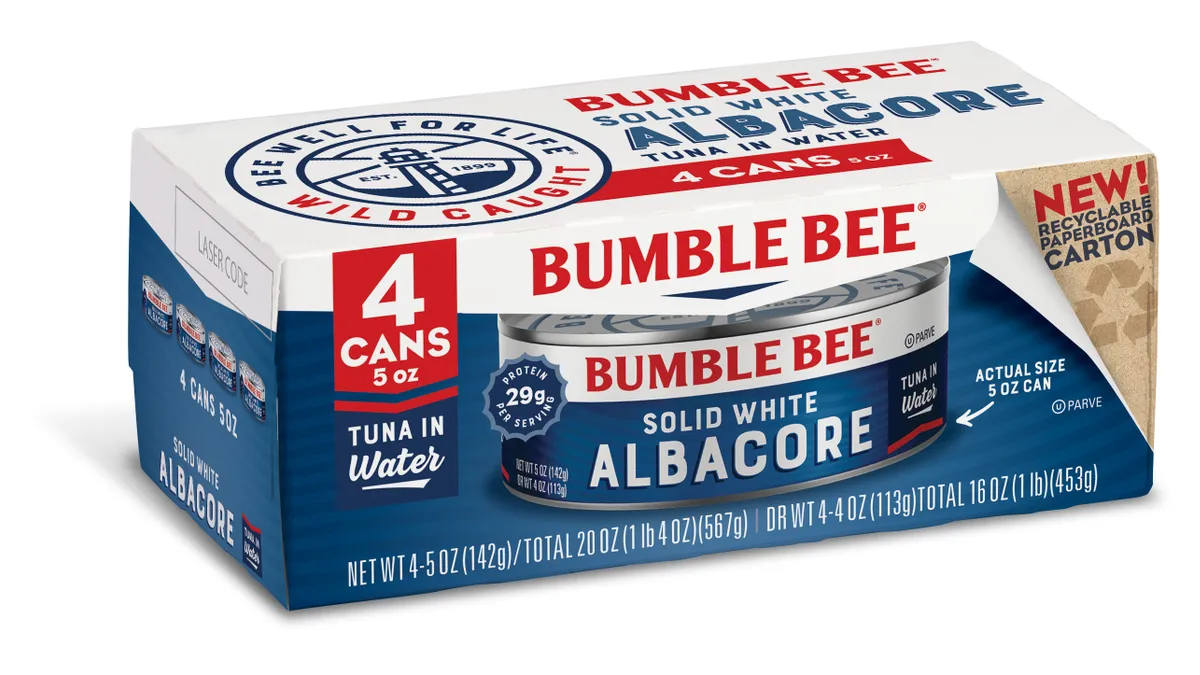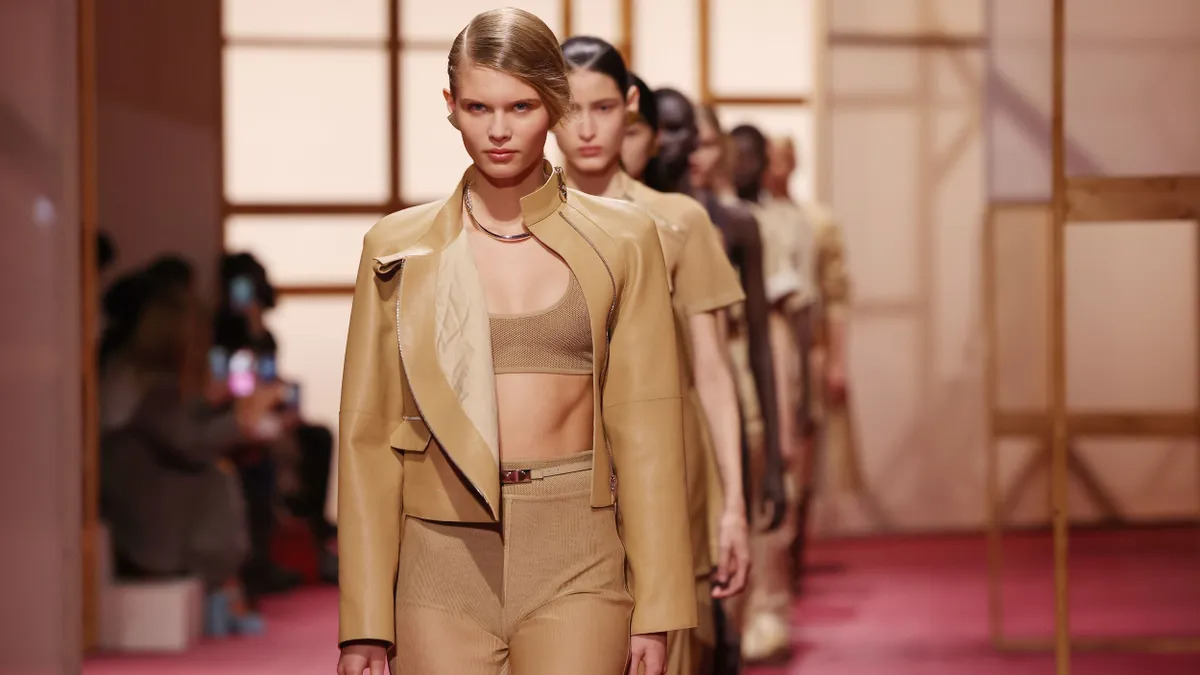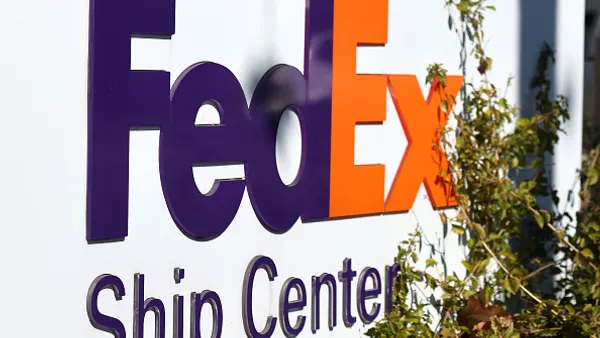To the Bumble Bee Seafood Company, improving the sustainability and the quality of your packaging can go hand in hand.
Last week, the company announced new outer packaging for its multipack tuna cans made of readily recyclable paperboard. Bumble Bee said that it is the first shelf-stable seafood brand to replace its shrink wrap packaging with a recyclable alternative.
The paperboard is made of 100% recycled material with at least 35% post-consumer content, and is certified by the sustainability nonprofit Forest Stewardship Council. The new packaging has debuted on 23 SKUs, from 4- to 12-can packages.
The new sustainable packaging was actually a positive outcome to an issue that Bumble Bee was having with existing 25-year-old shrink wrap packaging machinery at its Santa Fe Springs, California, factory, according to Leslie Hushka, senior vice president of global corporate responsibility.
"We were having the equipment challenges in factories with our previous machine, a lot of downtime," Hushka told Food Dive. "It was getting difficult for us to get service on that piece of equipment. You know, it was getting up there in years so we decided to look at alternatives."
Bumble Bee decided to switch to multipacker machinery from R.A. Jones that allowed it to tap into new packaging functionality and abandon shrink wrap. It worked with the machinery manufacturer to customize the equipment, Hushka said.
The company pondered whether the new machinery was worth the significant financial investment and logistical adjustments, Bumble Bee president and CEO Jan Tharp said in a video statement. It realized, though, that the switch away from plastic aligned with its aim of helping to restore the ocean.
By moving from shrink wrap to paperboard, Bumble Bee said it will eliminate 23 million pieces of plastic waste per year.
Beyond the sustainability aspect, Bumble Bee saw other benefits to adopting the new paperboard packaging. For one, the carton allows the products' barcodes to be scanned more easily than the shrink wrap, and to be placed on store shelves in two different orientations, the company noted.
But it also allowed for a visual brand refresh, according to Hushka.
The new paperboard packaging features bright colors and a picture of the tuna cans, along with nutritional information in a way that looks clearer than was possible on the shrink wrap.
“We were able to really put in some eye-catching graphics and new designs on the box that just were not possible in shrink-wrapped packages,” Hushka said.
As a seafood company, Bumble Bee's packaging innovations are part of its overall ocean restoration strategy, according to Hushka. Packaging has taken on greater focus at Bumble Bee since 2020, when it set a goal to have 98% recyclable packaging by 2025. This change from shrink wrap to paperboard will move the brand from 96% to 98% readily recyclable packaging, surpassing the goal timeline by 3 years, the company said.
Both the new paperboard packaging and the metal tuna cans are curbside recyclable.
“We want to make sure that none of our packaging ends up in a landfill or ends up in the ocean,” Hushka said.
The next part of Bumble Bee's effort to improve the overall sustainability of its packaging is more difficult: making all of it easily recyclable. Hushka cited a company survey that found 67% of consumers wanted its product packaging to be more recyclable.
The brand has discussed with recycling groups the difficulty of creating packaging out of new materials that are suited for the U.S. recycling system. Bumble Bee is also in conversation with recycling industry players and advocates about how to bring about structural changes in the U.S. recycling system so that packaging developers can create better recyclable plastics.
"If you think about it, the U.S. recycling system was designed 50 years ago. It was designed for paper and bottles. It's not designed for the type of flexible plastics that we have today," Hushka said.
Along with ease of recyclability, it is important to Bumble Bee that any new packaging also maintain freshness. Compared to a snack food, fresh foods like seafood often require more insulation and material to ensure peak freshness. Bumble Bee continues to explore this as it develops more recyclable packaging for its other products like tuna in pouches.
“We’re looking at specialty plastics where the tuna is actually placed in there and then taken through high pressure just to make sure that that product is fully sterilized. Alternative materials don't withstand that process well and don't continue to protect the product for the shelf life that we really require,” Hushka said. “So as we look at the materials, we’ll have to put them through those paces.”






















